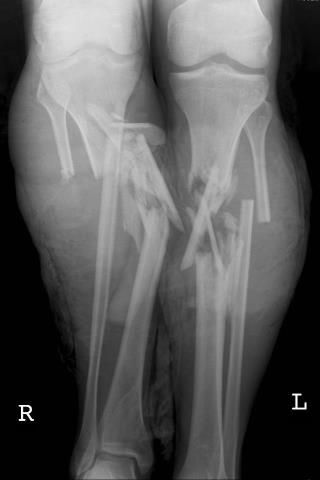
All in all the swelling goes on for ******* ages after the op and it's the same for most, it doesnt stop you doing anything you did before, it just contributes to the 'not feeling normal' which i got the first couple of months after being out of crutches, the trick is to just forget you had the injury and treat any extra discomfort as just normal aches and pains and just fight through it when doing anything strenuous. Hade a bit of discomfort with the tendons (arch on foot never recovered properly) every now and again but the doc says if it's not any better in a few months he'll give me some key hole surgery. Does any of your metalwork ever ache btw? Consultant says it's completly normal and its gunna take a good year before the swelling regulates. Had the op in early october of last year, i've done alot of sporting activity since rugby/10tors55/running/swimming but still get alot of swelling after these activities, usually have to rest it for a bit to bring the swelling down(bit annoying but i can live with it). Had exactly the same injury and repair job as sl26t from playing rugby. Also, does the tight brace help reduce the swelling, or will it aggravate it? Many thanks for your advice. and would appreciate if if you could help me understnd this. My worry currently is my toes and forefoot are still swollen.He said that is normal, and they could stay swollen for months. But he said it would be about 6 weeks before I will be able to walk unaided. The surgeon said I should put some weight on the foot, and could start swimming in a few days to help flexibility and muscle building. It is tight enough to cause some pain, though I take it off at night and put it back on in the morning.

5 weeks later ie last week, X-Rays showed ''fixation solid with early healing'' (surgeon's words.) They took off the cast and gave me a cloth brace which grips my lower shin and ankle and most of the foot very tight. I underwent open reduction and internal fixation with a T-plate and screws on the same evening, and was discharged walking with crutches 5 days later. These complications include: poor healing of bone, severe soft tissue problems, deep infection, bone infection (osteomyelitis), bone loss, nerve and artery injury and complications that can result in loss of a substantial portion of the limb (amputation).Hi, I sustained a comminuted fracture of the distal end of my left tibia and fibula in a motorcycle accident on Jan 12. Of all the operatively treated fractures in the human skeleton, the tibia is fraught with the most disastrous potential complications. Fractures of the top (a tibial plateau fracture) and bottom (a tibial pilon fracture) portions of the tibia are most commonly stabilized with either plate and screw fixation or external fixation, again depending on specific injury and patient characteristics.īecause the inner portion of the tibia is located just beneath the skin, the treatment plan for all injuries involving this region must not only take into consideration the injury to the bone, but also the condition of the surrounding soft tissues (the so called “zone of injury”).

Fractures of the tibial shaft are most commonly stabilized with a metal rod placed in the central medullary canal, although several other methods are used depending on specific injury and patient characteristics. Many fractures of the tibia require operative stabilization.

The plafond makes up the upper portion of the ankle joint. The tibia is a somewhat tubular structure that runs from the tibial plateau above to the distal tibia (tibial plafond) below.

This portion of the tibia is known as the tibial plateau. The top of the tibia has two concave surfaces and makes up the lower portion of the knee joint. The tibia and fibula provide the structural support of the lower portion of the leg with the tibia being the major weight bearing bone.


 0 kommentar(er)
0 kommentar(er)
